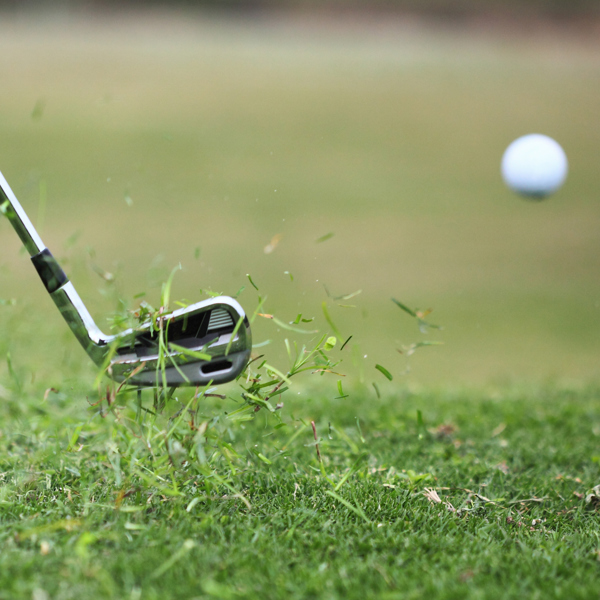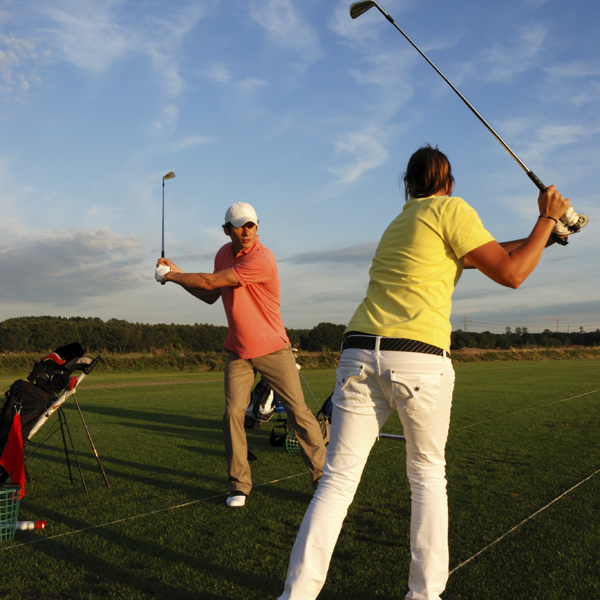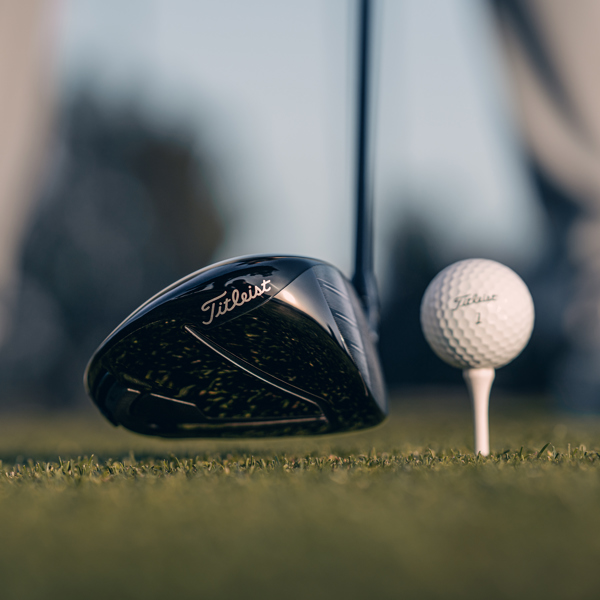From a distance golf can appear as a sport that has an abundance of rules, dress codes and expense and that’s before you’ve even hit a ball. It can be seen as taking too long and then there’s the conundrum of the golf swing starting with an unfamiliar grip and making a move that is equally unlikely. There are the elements to contend with, uneven lies, rough, bunkers and all those rules and scoring systems that can also be unfathomable.
But none of these have to be a problem. Golf can be as beautiful and simple as you want to make it. It can be played in incredible settings with incredible playing partners and it can provide you some equally memorable memories. It’s good for your physical health and, arguably, even better for your mental health.
You don’t have to play 18 holes, you don’t even have to step onto the golf course to enjoy the game. You don’t need 14 clubs to get going and you don’t have to spend a small fortune before you do take to the course.
Golf is so much more accessible these days compared to years gone by, it’s inclusive and fun and there should be no need to feel intimidated by any aspect of the game.
We want everyone to enjoy the game, to play golf with a smile on your face and to get as much out of it as possible.
There are many myths and concerns about various elements of the game so we’ve collated your cut-out-and-keep guide to getting going in the game with help from our PGA professionals.
Do you really need a lesson?
You will need lessons, we all need lessons, Rory McIlroy and all his contemporaries all have lessons so why would you not? This is not a school lesson, there are no marks out of 10 and you won’t be conscious of getting things wrong. This is an opportunity to instil the right habits.
Coaching has changed so much in recent years and there are so many ways to enjoy your time spent with a PGA Professional; it’s not a complicated process, rather an enjoyable and hugely beneficial way to make some quick improvements.
“I work on the basis of communication with my pupils. I don’t want them to leave the lesson and think, that’s it for a few weeks. I want them to keep me updated on how they’re playing. Modern coaching is nurturing what you’ve got and improving that.
"Another concern is that we're going to concentrate too much on the grip and that we can’t do anything unless you’ve got a great golf grip. I had a guy turn up recently and he phoned me first, then emailed me a video and we a lot of correspondence before and it turns out that he had a cack-handed grip. He was worried that I would try and change his grip, I simply told him that I coached a guy who hadn’t got any hands so, if he wanted to stick with his grip, then we would work with it. The relief on his face was so clear and he loved it,” explains PGA Professional Adrienne Engleman.
For more on the importance of having a lesson CLICK HERE or on the link below.
Is a golf lesson intimidating?
Golf lessons are a good thing, they’re the first sure step to making some real progress in the game. When you first start playing golf beginners wonder if they aren’t good enough for lessons and they feel self-conscious. But you’re not the first and you certainly won’t be the last to have your first lesson.
“One of the first things I do to help beginner golfers or anyone feeling self-conscious is to point out all of the dents and golf ball marks along the walls and dividers of the coaching bays. Everyone starts somewhere and missing the ball and hitting bad shots is part of getting there. A good pro will never judge or laugh at you. We are here to help you feel comfortable, improve your game and most importantly your enjoyment,” explains PGA professional Emma Booth.
Get golf tips direct to your inbox with the PGA Play newsletter
Do I have to have lessons on my own?
In a word, no. Your local PGA Professional will be able to accommodate you so you can try the game with a friend or friends or as part of a group. This will help to keep the costs down and also to take away any self-consciousness, add some fun and make new friends. Friendships are a big part of stimulating our interest to keep coming back for more and for when you first step out onto the course.
“New golfers tend to have the same mindset, with many arriving and believing that they will struggle as they have not played much sport previously. The session is a confidence builder, soon turning a serious facial expression into big smiles when they become comfortable that everyone is in a the same situation. The air shots and odd topped ball certainly breaks the ice. The group format really reduces the pressure - the self-doubt with questions such as will I be good enough are soon dispelled with the way I mix the golfers. Focusing upon the interaction is critical,” explains PGA Captain Sarah Bennett.
For more on the benefits of a group lesson CLICK HERE or on the link below.
How a golf lesson works
The golf lesson is a two-way process. You know your own game better than anyone and a PGA Professional will make the most of that knowledge by asking you a lot of questions. There is so much technology available to understand your swing, your patterns and how your body works but the constant will be on the communication. The PGA Professional wants you to improve and really enjoy the game.
“The lesson always begins with an enthusiastic greeting, I want the student to know I am excited to see them! It then moves onto questions, I ask so many it must be tedious but, the more I know, the more I can help. I will constantly remind them that they can ask questions at any point in the lesson. I will question their learning style which helps us to communicate more efficiently and for me to understand their background and time constraints and, this way, you’re always pushing them to their limits in the right way. A lot will depend on what the student wants; I have players who want a lower handicap, some who want to hit the ball longer and some who want to cure their chipping yips etc. So essentially we set very clear personal goals and objectives during the first lesson and put all of our combined energy into achieving these things,” explains PGA Professional Tom Reid.
For more on how a lesson works CLICK HERE or on the link below.
Do you need a full set of clubs?
You’ll hear about golfers talking about the make-up of their bag and how they make use of having 14 clubs. When you’re starting out you really don’t need to splash out on a full set of clubs or even a half set and it’s far easier these days to find an ideal beginner’s set.
Your swing will improve as you learn and understand it and you’ll soon appreciate what clubs you’ll need for where you play your golf. Golf really doesn’t have to be overly expensive when you’re taking your first steps.
“First up make sure that you’ve got the correct clubs for you. A great starting point would be three clubs, so just a couple of clubs and a putter, and I'll show them some different shots and how adaptable a club can be. These days there are so many options of what you can buy and a half set will easily do you for your first year, probably longer. When I started I used to get a club for my birthday and another for Christmas so I learnt very quickly how to hit different shots and that turned out to be my strength. It saddens me when I see a new junior with 14 clubs, you want to work your way up to that,” explains PGA Captain Sarah Bennett.
For more on how many clubs you’ll need to get going CLICK HERE or on the link below.
Get golf tips direct to your inbox with the PGA Play newsletter
Is golf good for your mind?
Golf will certainly keep you active but that barely touches the surface of all the benefits that it can bring. The places it can take you, the friendships you can make and it can all be done on your terms; it doesn’t have to be 18 holes and hours out of the house, it can very easily be bite-size chunks to shake off the cobwebs of a long day at work.
There’s never a time that’s too soon or too late to get into golf and that’s part of the beauty of the game.
“Golf is an incredible sport, it’s not a reactive game. You choose when you hit that round dimply thing. This makes it a tougher sport psychologically than so many others. Where a ball is perhaps served or bowled at you, you don’t have time to talk yourself out of succeeding. There’s a big old chunk of thinking time before you hit each golf shot. So golf will challenge the socks off you. It is also a very revealing game, you learn so much about yourself. Your ability to cope under pressure, to focus on the task in hand, how you react to failure, how you react to success, the list goes on. So many challenges are hurled at you. I think that’s why so many are surprised at just how much they get from it,” explains PGA professional Katie Dawkins.
CLICK HERE or on the link below for more on the mental benefits of the game.
What should I do at the driving range?
The range is a very different place these days with so much technology available to make it a more enjoyable and stimulating experience. While bashing 50 balls away with the same club can be a lot of fun it might not be too helpful in making those early improvements. You don’t need to be rigid with your practice but a plan is definitely beneficial.
“Stop practising what you’re already quite good at. Most people use the range as a bit of an ego massage. and hit an 8-iron from a perfect lie and hit it well, and think that they’re helping their game. That has a purpose but that gets overdone.
“We don’t like the idea of practising shots where we might not do very well and that is probably the best form of practice session. If you're very good from 150 yards then there is no point doing that for an hour when you might be poor from 100 yards. Not many of us plan out the hour so think about either what you're going to do with your time or ideally the number of balls. With my students I like counting out the balls – so 25 tee shots, 25 pitch shots, 25 mid-irons and then pick 25 of whatever you’re the worst at. Have to have a plan and get away from everything being so random,” explains PGA Professional Ian Clark.
For more on how to make some real progress away from course CLICK HERE or on the link below.
When are you ready for the course?
We all remember that first nine or 18 holes but how do we know when is the right time to test yourself away from the driving range? Will everyone be watching you off the 1st tee (no) and will you be good enough to take those huge steps onto those fairways (yes)? What about things like scoring and etiquette? How many clubs do you need?
Everyone has to start at some point and others will be aware that this might be your first round. We all want the same thing, to get out onto the course and to start hitting some great shots.
“No golfer is ever too early to play the game, a slight adjustment may be required to the length but we are here to 'play the game and not practise the game'. During the lessons I may try to let the player experiment with one club and moving the ball position to hit various shots, adjusting the backswing length and moving the hands up and down the handle to understand the creativity involved with one club. I will then provide a playing scenario relative to their experience level. Those first steps are critical as it is the initial introduction to golf,” explains PGA Captain Sarah Bennett.
CLICK HERE or on the link below for more on when’s the right time to tackle the course.
How do I conquer those 1st tee nerves?
Everyone gets 1st tee nerves, whether you are a complete beginner or out on tour. There’s a big build-up to that opening shot, we all want to get off to at least a respectable start and, probably most of all, we don’t want to embarrass ourselves.
A good starting point is to remind yourself that everyone isn’t watching what you’re doing and, if they are, they don’t want to see you make a mess of things. There are some great ways of going into the shot with a calmer and more positive outlook and without all that unnecessary stress and anxiety.
“When you are standing on the 1st tee try and make your vision as wide as possible. When you go into peripheral vision that will calm the mind down. When you go into fight and flight mode and become anxious you go into tunnel (fovial) vision and that’s when panic sets in. The wider that you can increase their vision it has a calming effect on the mind. Think of when you can’t find your car keys in a rush, you go into tunnel vision and can’t see anything! If you can do it without moving your head it really works well so just stand there and see how far you can see by looking out of the corner of your eyes, this will stop you going into that unwanted fight and flight mode,” explains PGA Professional Deana Rushworth.
For more on some great tips on how to overcome those early jitters CLICK HERE or on the link below.










